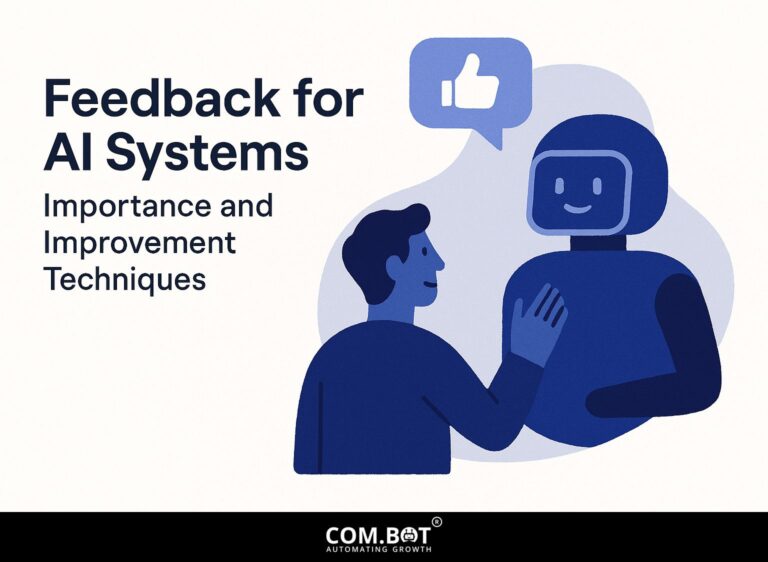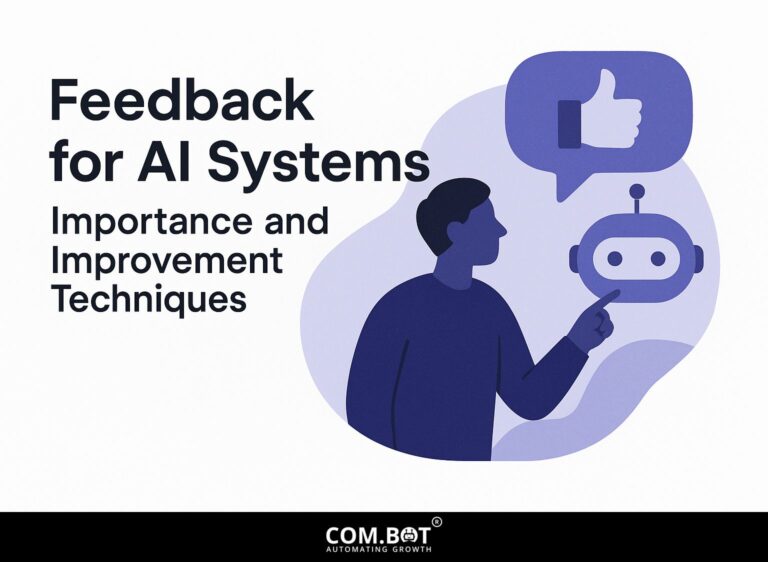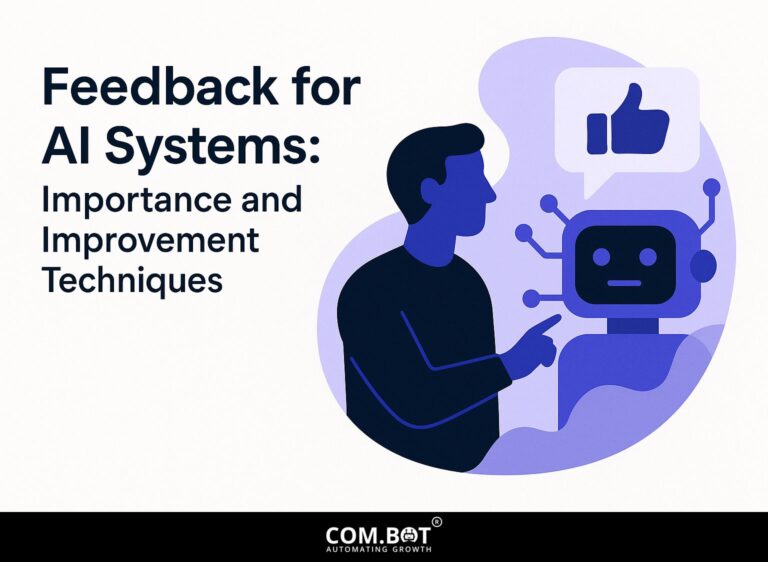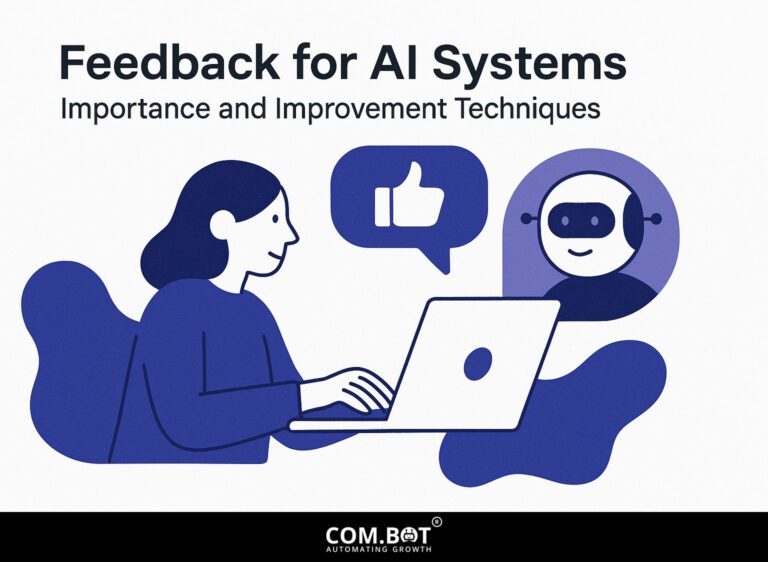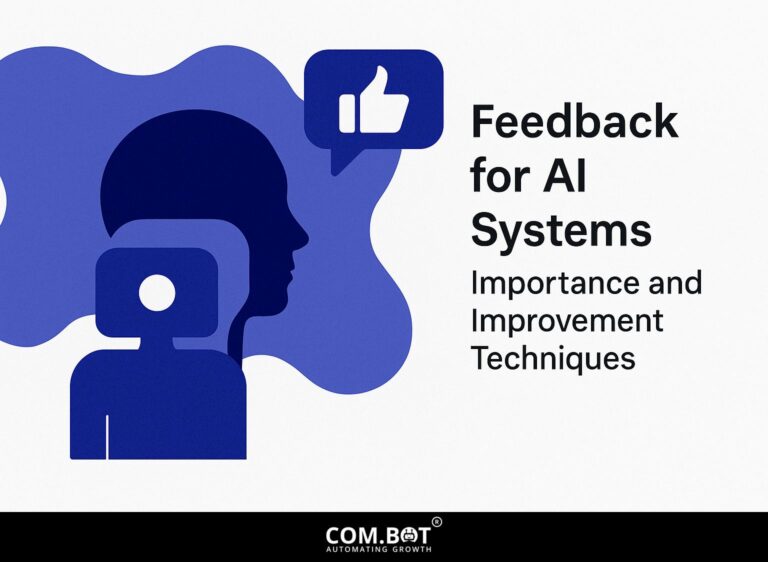Feedback for AI Systems: Importance and Improvement Techniques
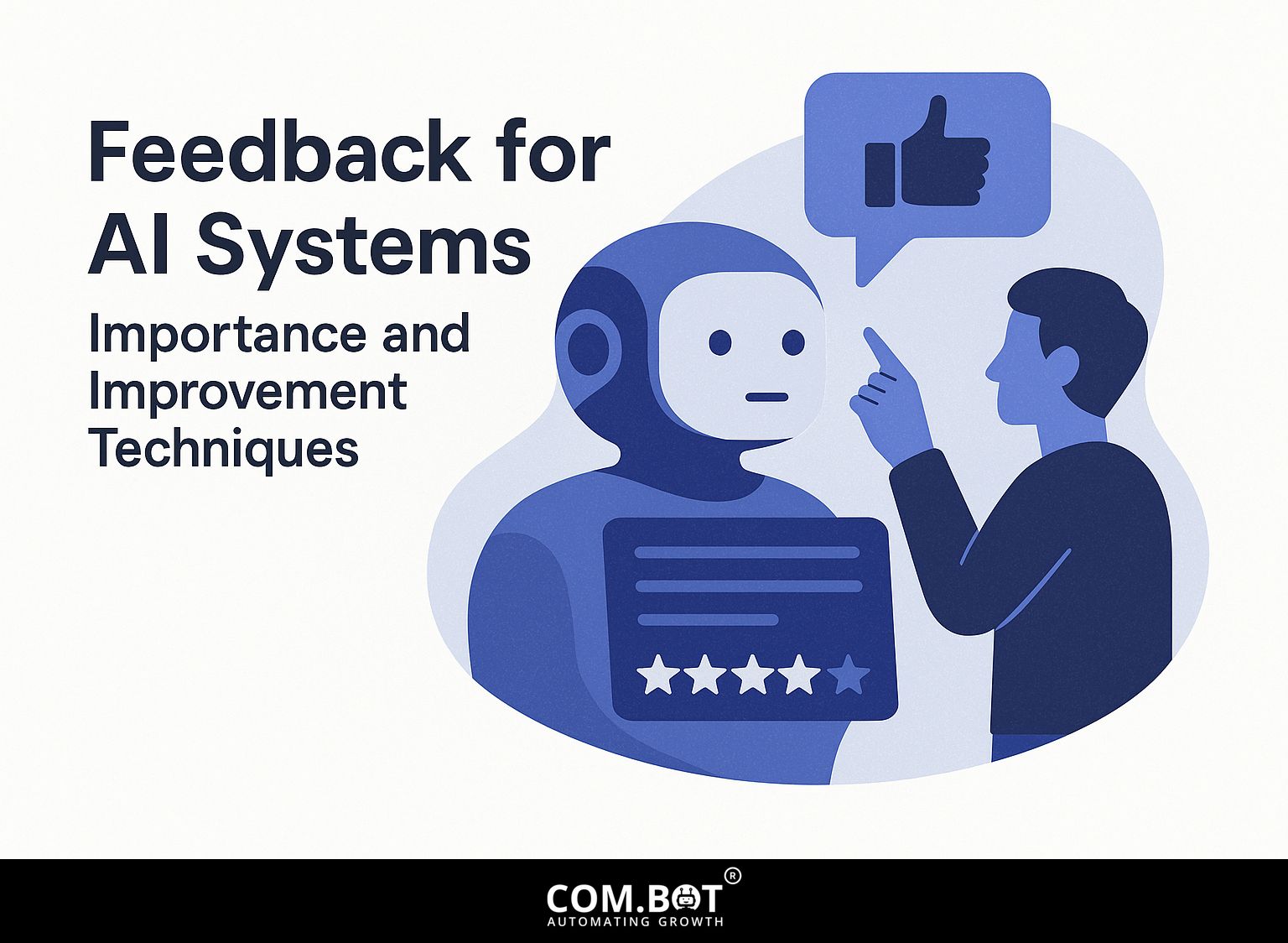
In the fast-changing field of artificial intelligence, carefully watching and providing feedback for AI systems is important for improving performance measurements. Including human feedback in machine learning improves model accuracy and user experience. This article looks at why feedback is important in AI development, different ways to apply it, and the problems that can come up. Learn how improving feedback systems can result in more intelligent AI that meets our requirements more effectively.
Key Takeaways:
- 1 AI Feedback Systems Statistics
- 2 Importance of Feedback
- 3 Types of Feedback
- 4 Techniques for Implementing Feedback
- 5 Challenges in Collecting Feedback
- 6 Future Directions in Feedback for AI
- 7 Frequently Asked Questions
- 7.1 Why is feedback important for AI systems?
- 7.2 What are the consequences of not having feedback in AI systems?
- 7.3 How can feedback be collected for AI systems?
- 7.4 What are some techniques for improving feedback in AI systems?
- 7.5 How does feedback contribute to the ethical development of AI systems?
- 7.6 Can feedback be used to continuously improve AI systems?
Definition and Overview
Feedback in AI involves using input from people or computers to make algorithms better and improve results.
This feedback falls into two groups: feedback from people and feedback from machines.
Human feedback involves direct input from users, such as ratings or comments, which help creators understand user needs and frustrations. Automated feedback is generated by observing system performance and user interactions.
Both types are essential for better operations because they give data that can be studied to improve accuracy and make users happier.
Using platforms such as UserTesting for feedback from people and Google Analytics for computerized data can make this process more efficient.
Role of Feedback in AI Development
Feedback plays a key role in AI development, helping to make ongoing improvements and monitor how well it works.
For example, e-commerce platforms like Amazon use customer feedback to improve product recommendations.
When users write reviews, this information helps algorithms understand product quality and customer likes, resulting in better recommendations over time.
Netflix, for example, analyzes what people watch and how they rate shows to change its content options, making sure they match what viewers enjoy.
This repeated process improves user satisfaction by favoring content that connects with viewers, leading to increased participation and sustained interest. Worth exploring: Influence of Generative AI on Public Opinion.
AI Feedback Systems Statistics
AI Feedback Systems Statistics
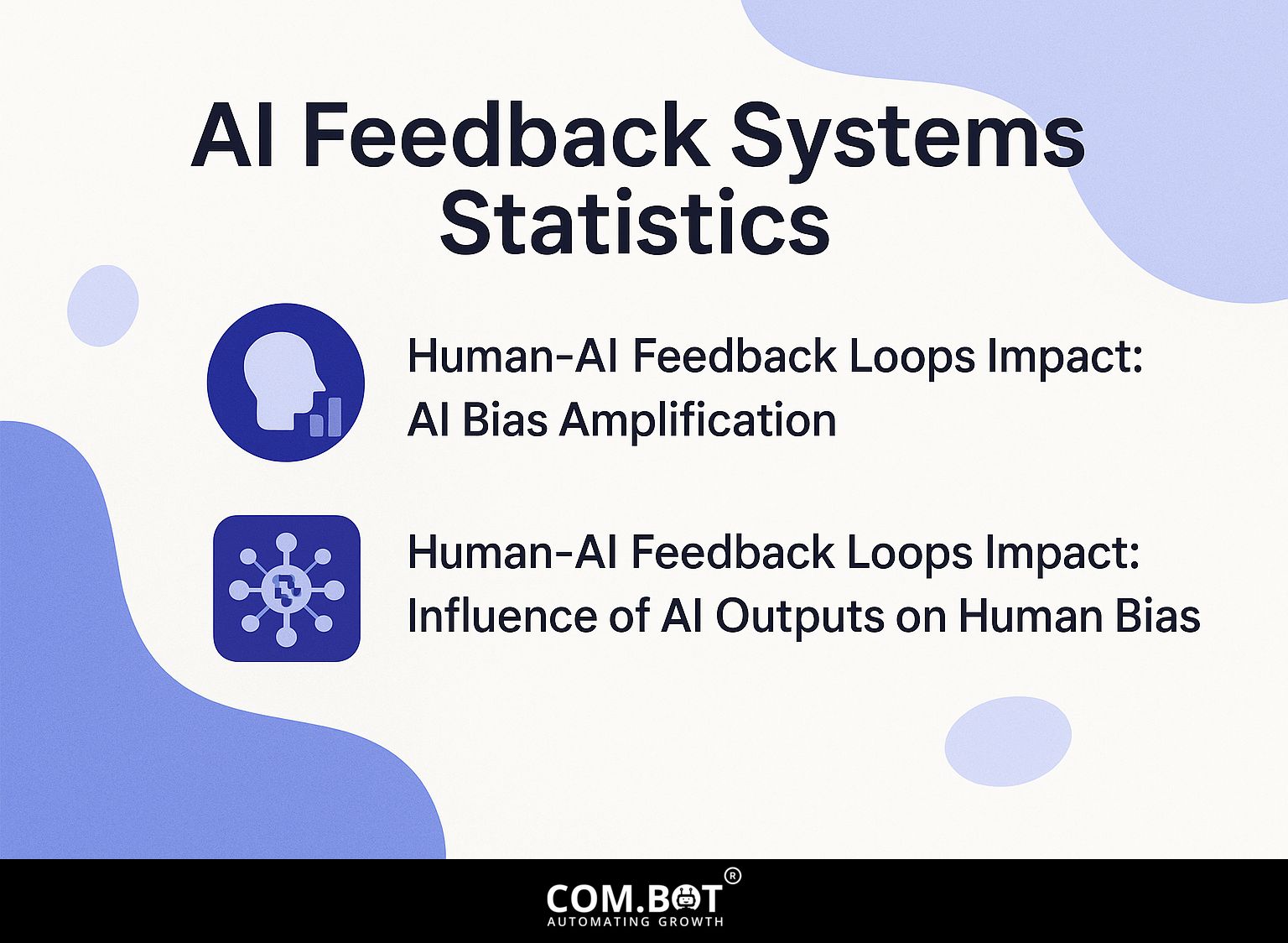
Human-AI Feedback Loops Impact: AI Bias Amplification
Human-AI Feedback Loops Impact: Influence of AI Outputs on Human Bias
The AI Feedback Systems Statistics give a thorough examination of how people and AI work together, especially examining how these interactions affect and increase biases This dataset explains the challenges of AI bias in tasks that involve combining emotions and shows how AI outputs can influence human decisions.
Human-AI Feedback Loops Impact indicates that the AI-induced sad bias in emotion aggregation tasks starts at 56.3%, a notable increase from the baseline sad bias of 49.9%. This suggests that the AI system introduces an initial bias which differs from the baseline. With continued interaction, this bias amplifies further to 61.44% in the final block. The 6.4% increase in bias after interaction signifies that AI systems can significantly affect human emotional assessments, possibly leading to skewed outcomes over time.
- Influence of AI Outputs on Human Bias: It’s fascinating to observe that when humans disagree with AI outputs, the change rate is 32.72%. This suggests a strong influence of AI outputs in shaping human perceptions when discordant views are presented. Conversely, when AI outputs align with human expectations, the change rate is just 0.3%, indicating minimal influence in such cases. After interaction with AI, the human bias level is recorded at 56.3%, reflecting the interplay between human judgment and AI recommendations. The high change rate with disagreeing AI indicates a major change in how people make decisions when faced with AI advice that differs from what they originally thought.
Overall, these statistics emphasize the critical need for careful design and monitoring of AI systems to prevent unintended bias amplification. Knowing how these components function is crucial for building AI systems that make impartial decisions. This ensures that interactions between humans and AI remain constructive and upholds truthful human evaluation.
Importance of Feedback
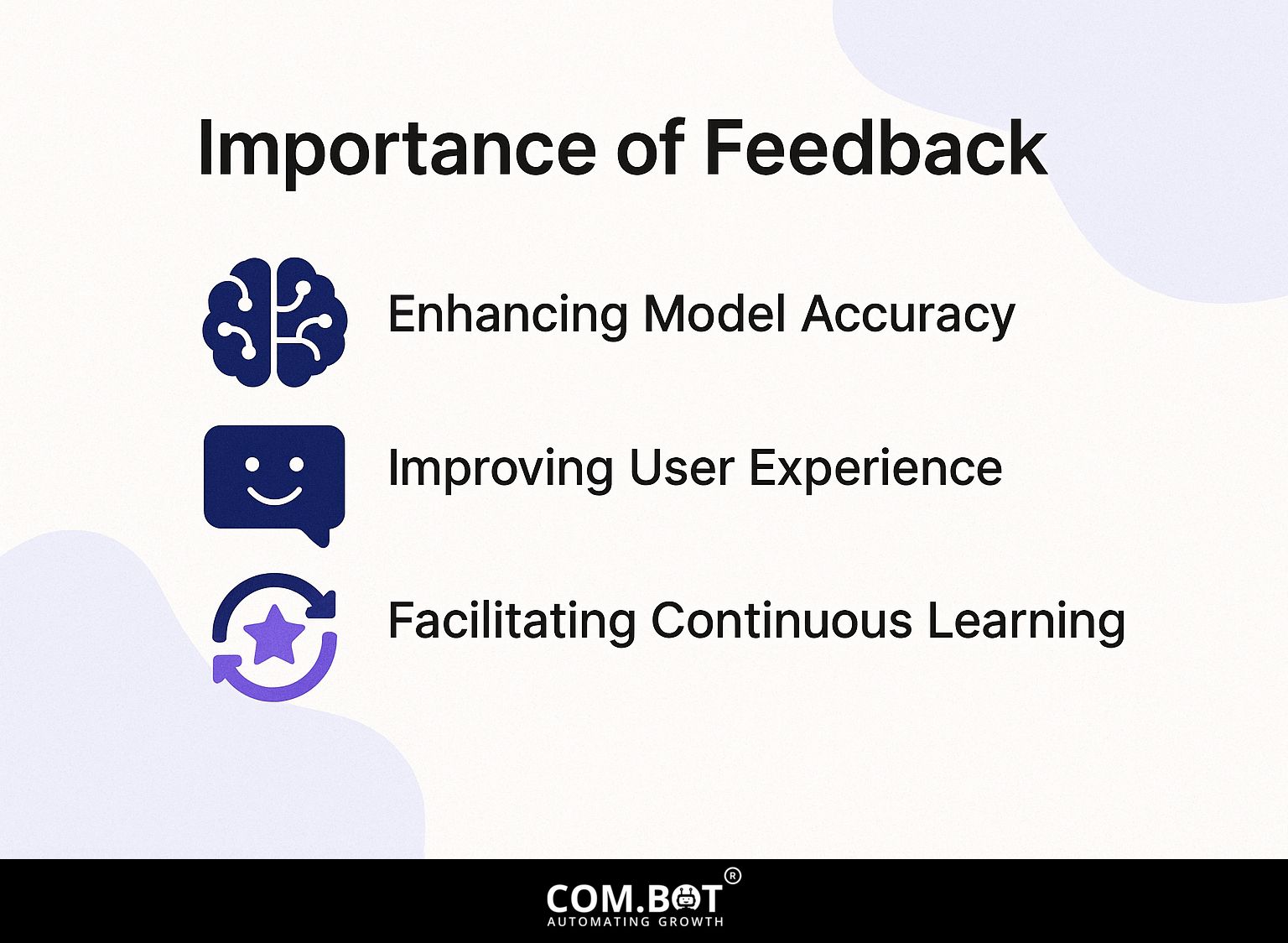
Including feedback in AI systems is necessary to reach high accuracy and make user experience better.
Enhancing Model Accuracy
Utilizing feedback can increase AI model accuracy by up to 30%, resulting in significant improvements in performance metrics.
One effective method to implement feedback is through reinforcement learning (RL) techniques. For instance, training systems can adjust their predictions based on real-time data performance.
A study by Stanford revealed that systems using RL outperformed traditional models by 25% in predicting stock prices.
By using feedback from users, the algorithm can improve. For example, Google Search improves its accuracy based on user interactions.
Updating the model often with new data is essential to keep its accuracy improvement. Related insight: Retrieval-Augmented Generation: Integration and Benefits
Improving User Experience
Effective feedback mechanisms can lead to a 40% increase in user engagement, enhancing the overall user experience.
To implement these mechanisms, start by establishing real-time feedback loops using tools like Label Studio, which allows users to submit feedback on specific elements of your platform.
Next, think about doing user satisfaction surveys regularly. Using platforms like SurveyMonkey can make this easier.
Analyze the feedback collected to identify trends and areas for improvement, adjusting your user interface or content accordingly.
Regular updates based on user feedback improve satisfaction and create a community feel, encouraging continuous communication with your audience.
Facilitating Continuous Learning
Setting up feedback systems encourages ongoing learning, enabling AI to change and grow based on user feedback and changes in the environment.
For instance, autonomous vehicles like those developed by Waymo continually gather data from their driving experiences. When these systems face unexpected situations, they use this new information to modify their algorithms.
This feedback method improves their movement’s accuracy and safety over time. Tools like TensorFlow provide ways to add real-time feedback to machine learning models, allowing for step-by-step improvements.
AI systems get better at answering questions by learning from how people interact with them, which makes them more useful and user-friendly as time goes on.
Types of Feedback
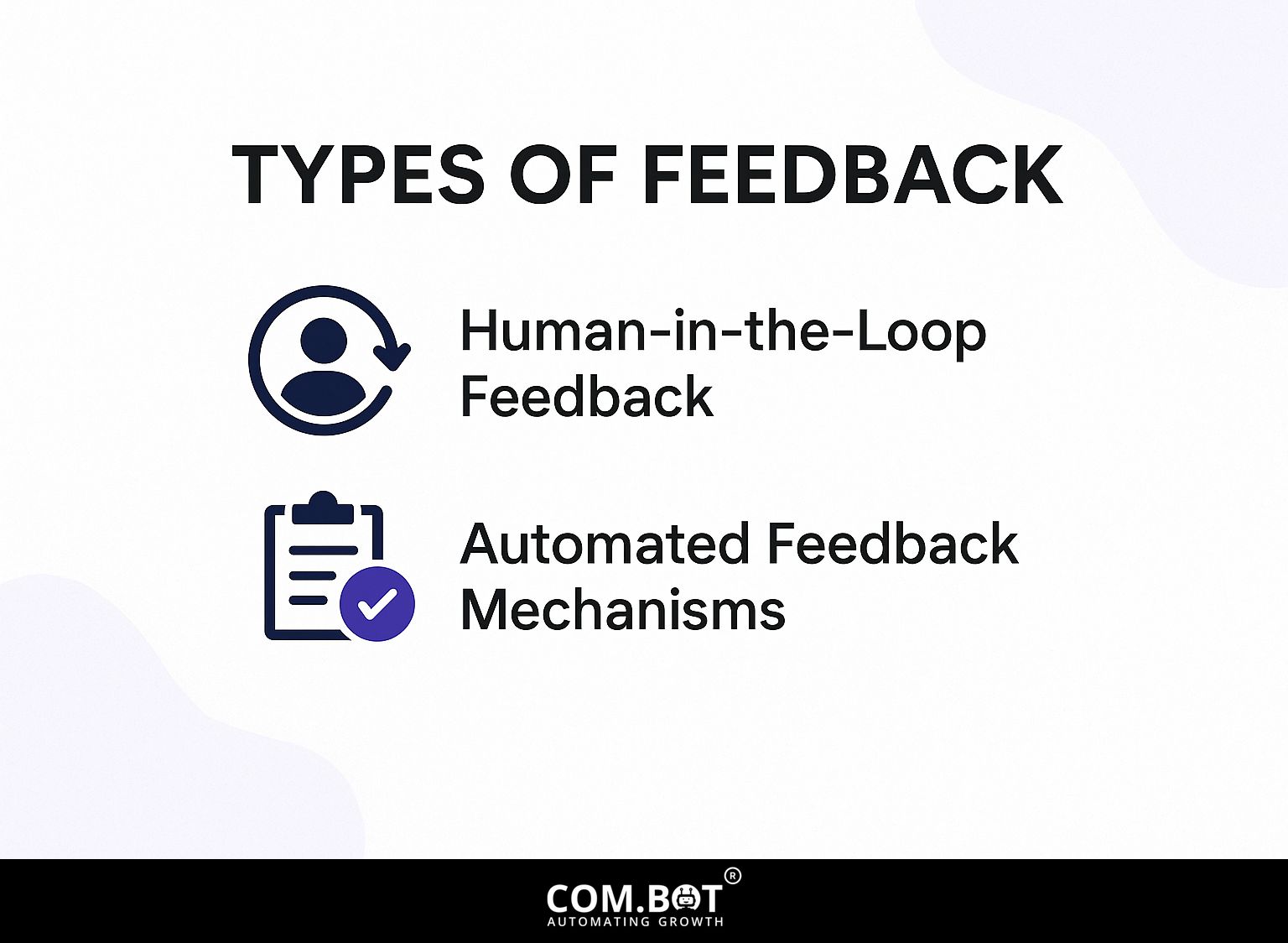
Knowing the different types of feedback is important for improving AI systems and meeting user needs.
Human-in-the-Loop Feedback
Human-in-the-loop feedback involves users directly providing input to make AI systems’ decision-making better.
In healthcare, this can be critical. For instance, radiologists often review AI-generated diagnostic reports to validate or adjust findings.
Setting up a regular feedback process involves three steps:
- Collect feedback through surveys or direct comments from medical staff;
- Use platforms like Google Forms or SurveyMonkey to organize and analyze this data;
- Put information back into the AI to improve how its algorithms work.
This repeated process keeps improving, resulting in improved patient results and more dependable diagnostic tools. If interested, you might explore our insights on Feedback for AI Systems: Importance and Improvement Techniques.
Automated Feedback Mechanisms
Computer programs in automated feedback systems measure performance and provide instant feedback without human input.
In e-commerce, tools like Google Analytics allow businesses to track user behavior, tracking metrics such as page views and conversion rates.
To set it up, place a tracking code on your website and set up goals to keep track of how customers move through your site.
For predictive monitoring, programs like Hotjar offer heatmaps and session recordings, revealing how users interact with your site.
By using these tools, businesses can gather useful information, change strategies to increase user involvement, and increase sales successfully.
Techniques for Implementing Feedback

Using effective methods for applying feedback is key to getting the most out of AI systems.
Active Learning Approaches
Active learning methods let AI systems find predictions they are unsure about and ask users for input to improve their algorithms.
By focusing on data points where the model is least confident, users can prioritize feedback on the most impactful areas.
For instance, in natural language processing (NLP), a spam detection model might highlight messages it is unsure about and request user input to classify them correctly.
Popular tools like Snorkel and Prodigy provide user-friendly interfaces for this, allowing users to annotate data in real-time. By going through the process of getting feedback multiple times, the results become more accurate and require less labeled data, making model training quicker.
Reinforcement Learning Strategies
Reinforcement learning strategies use feedback as a learning signal to improve actions in changing situations.
This system is important in areas like gaming, where programs like AlphaGo and OpenAI’s Dota 2 agent have made great advancements.
For instance, AlphaGo employed a dual approach of supervised learning from human games and reinforcement learning through self-play, eventually defeating world champions. Similarly, OpenAI’s Dota 2 agent learned from thousands of games, adjusting its strategies in real-time based on success or failure.
These examples show how reinforcement learning systems allow AIs to constantly improve their strategies, greatly increasing their effectiveness as time goes on.
Challenges in Collecting Feedback

Gathering opinions for AI systems has some difficulties that can affect how well the feedback is used.
Data Quality and Bias
Ensuring high data quality is essential, as poor feedback can introduce biases that skew AI performance.
To mitigate biases in AI models, consider implementing a few key strategies.
- Diversify your training data by including varied demographic groups, which can help improve overall model accuracy. For example, healthcare applications now use different datasets that include groups that were previously overlooked, resulting in fairer treatment suggestions.
- Regular checks of AI decisions can show hidden biases. Tools like Fairness Indicators can help in assessing these areas.
- Receiving feedback from various individuals allows the model to adjust and meet the needs of all users.
User Engagement Issues
Low user engagement can greatly reduce the effectiveness of feedback systems in AI.
To get users more involved, consider using methods like giving rewards for participation or setting goals for getting feedback.
For example, platforms like UserVoice successfully implement point systems, allowing users to earn points for submitting feedback or completing surveys, which can later be redeemed for rewards.
Custom messages, like specific follow-up emails or recognizing what a user says, can greatly improve how often people reply.
Tools like Typeform let you change the way users interact with surveys, making them more interesting and easy to use, which results in better feedback.
Future Directions in Feedback for AI

The progress of feedback in AI systems depends on combining different types of feedback and handling the ethical issues that come up.
Integrating Multimodal Feedback
Including various types of feedback in AI systems can improve how they work and give better information about how users interact. For an extensive understanding of different feedback methods, you can explore our comprehensive study on feedback improvement techniques.
This integration uses various data types like text, images, and audio to better understand user behavior.
For example, tools like TensorFlow can manage these diverse inputs to train models effectively. Applications like OpenAI’s CLIP use pairs of text and images to better understand and identify context.
By using tools like Librosa that support audio analysis, developers can build systems that follow spoken commands and evaluate visual data.
By using these methods, machine learning becomes well-rounded, leading to stronger AI programs.
Ethical Considerations in Feedback Systems
Handling ethical issues in feedback systems is important for keeping trust and responsibility in AI applications.
Transparent practices in feedback collection are essential. For instance, companies like Google have faced scrutiny over their data usage policies, highlighting the need for clear communication with users about how their feedback influences AI development.
Involving stakeholders during the process helps build trust. For example, creating advisory panels can provide various perspectives, ensuring feedback systems are fair and inclusive.
Incorporating user consent mechanisms, such as opting in for data use, reinforces ethical standards while promoting accountability in AI practices.
Frequently Asked Questions
Why is feedback important for AI systems?
Feedback allows AI systems to learn and improve, leading to better performance and more accurate results. It also helps to identify and correct any errors or biases in the system.
What are the consequences of not having feedback in AI systems?
Without feedback, AI systems may continue to make mistakes or reinforce biases, leading to incorrect or unfair outcomes. This can also damage the system’s reputation and trustworthiness.
How can feedback be collected for AI systems?
Feedback can be collected through various methods such as user surveys, user ratings, user testing, and data analysis. It is important to choose the appropriate method based on the specific AI system and its purpose.
What are some techniques for improving feedback in AI systems?
Improving feedback in AI systems can be achieved by designing a user-friendly interface, providing clear instructions for giving feedback, and applying algorithms to analyze and integrate the feedback into the system.
How does feedback contribute to the ethical development of AI systems?
Feedback helps AI systems find and fix any biased or unfair patterns, supporting fair and ethical decisions. It helps make sure the system matches what users want and believe in.
Can feedback be used to continuously improve AI systems?
Feedback helps to make AI systems better over time by using new information to change algorithms and fix problems or concerns raised by users. This leads to a system that gets more accurate and works better as time goes on.
